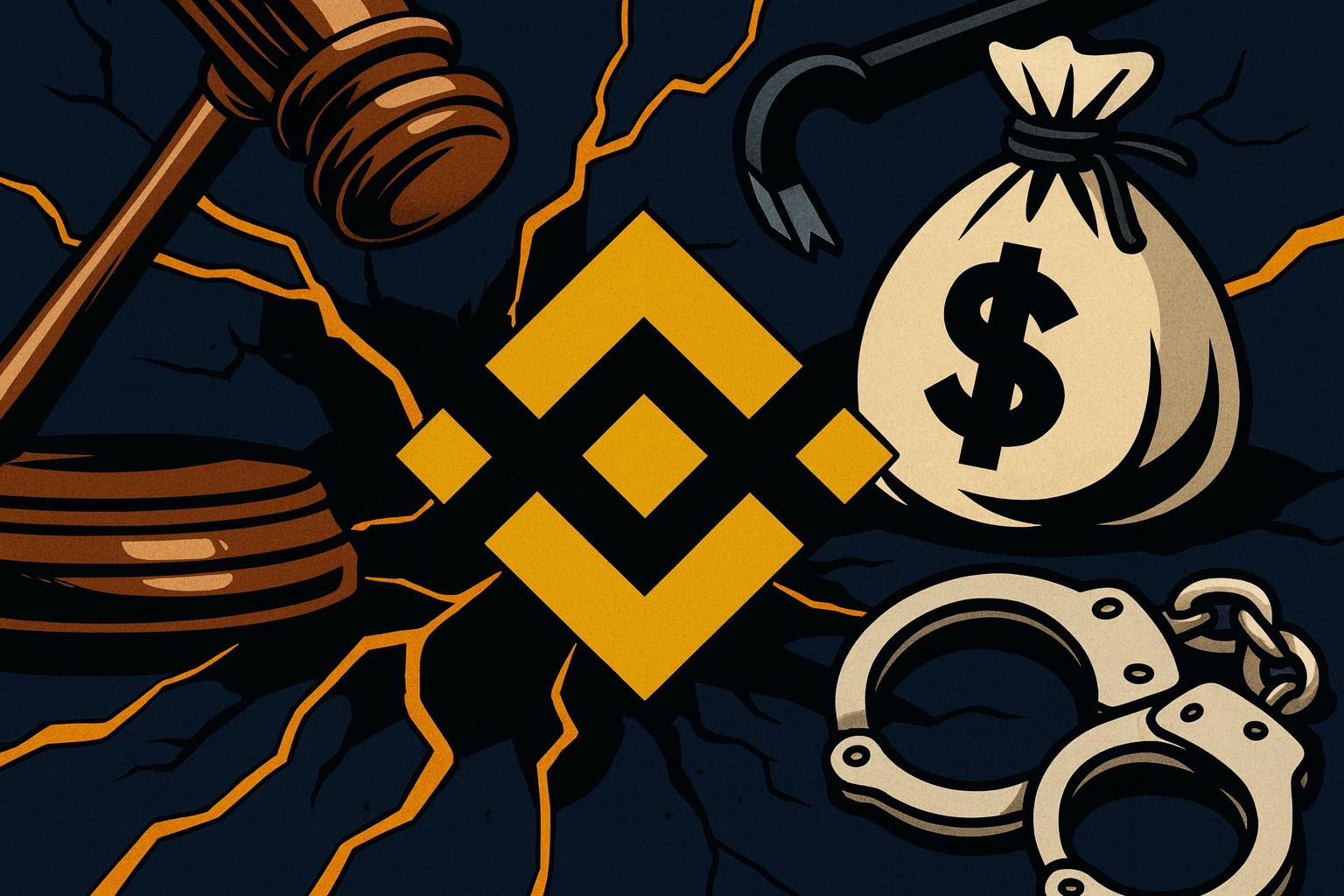Recent Updates
Find Out How to Create a Reliable Anonymous Bitcoin Wallet
Wallets with good anonymity are hard to come by. This guide will show you how to create a reliable anonymous bitcoin wallet app that can’t be traced back to you.
Perhaps you think of the booming popularity of this cryptocurrency, or maybe it makes you feel about the Bitcoin hype-cycle that took place in late 2017 and early 2018 when Bitcoin hit its all-time high of nearly $20,000 per coin.
Whatever your thoughts on Bitcoin are, there’s no denying that this digital currency has been an essential part of modern history and helped to shape how we conduct financial transactions today.
Why do we need an anonymous bitcoin wallet?
Although bitcoin itself is an anonymous currency, not all bitcoin wallets are. Many exchanges and online merchants collect your personal information to comply with anti-money laundering and Know Your Customer (KYC) laws, leaving your bitcoin vulnerable if those companies get hacked or go out of business.
An anonymous wallet protects you against these risks by not requiring identifying information for purchase or transaction processing.
This post will teach you how to find and set up an anonymous bitcoin wallet so that you can start purchasing products from online markets like eBay anonymously.
Advice on creating an anonymous bitcoin wallet: There are many ways to do it, but we’re going to use two favored tools for creating a genuinely anonymous bitcoin wallet: Electrum and Tor.
What are the qualities of a reliable anonymous Bitcoin wallet?
It is one of many things that you’ll have to consider when you’re trying to create an anonymous bitcoin wallet. If you don’t do your research, you could end up with something that doesn’t offer enough security or privacy for your needs.
Pay close attention and make sure you do your due diligence. The reason why you need a reliable anonymous bitcoin wallet: Well, there are a few good reasons why it’s essential to develop your reliable digital wallet.
First off, some services may not be as reliable as they claim; in fact, they may even be scams aimed at stealing money from unsuspecting users.
How can I create my anonymous bitcoin wallet?
Wallets with good anonymity are hard to come by. This guide will show you how to create a reliable anonymous bitcoin wallet app that can’t be traced back to you.
To keep things simple, we’ll use Electrum for demonstration purposes. You can also use other wallets, such as Armory and Mycelium, which offer better security than Electrum does.
The first step is to download Electrum from its official website.
You’ll need to create an account before you can get started. Be sure to use a unique email address that isn’t tied to personal information (if you don’t want your wallet linked with your identity).
Once you finish creating an account, you can download and install Electrum on your computer or laptop. When you launch Electrum for the first time, it will ask you to choose between using a Standard Wallet or a Server Seed wallet. It is recommended that beginners select Standard Wallet when they first start.
Conclusion:
There are plenty of bitcoin wallets out there. However, when it comes to choosing reliable and safe, you can’t go wrong with Armory. It offers several features that other wallet solutions don’t have. You can create backups and store them in multiple locations for extra security, making your funds impossible to lose or steal.
You can also develop sub-wallets, which allow you complete control over how your bitcoins are managed. That way, you can easily take advantage of bitcoins versatility without putting all your eggs in one basket.
A fantastic feature called Cold Storage also gives you an option to keep your bitcoins offline, which makes them more secure than any other storage method on Earth – not bad for an anonymous bitcoin wallet! Before choosing a solution, make sure you do some research to find out what kind of support is available.
After all, online anonymity doesn’t matter much if no one can help you get back into your account if something goes wrong. Ensure to check customer reviews, too; while anonymity protects both users and businesses from legal trouble, it doesn’t mean they don’t have flaws like anyone else. If possible, try to talk directly with people who used similar services before to give more valid opinions about them.
Crypto
Do Kwon Faces 12-Year Sentence as Prosecutors Call Terra Collapse “Massive Fraud”

U.S. prosecutors are seeking a 12-year prison sentence for Terraform Labs founder Do Kwon, arguing that the collapse of Terra and Luna amounted to one of the largest frauds in crypto history. The request, filed in the Southern District of New York, highlights the scale of losses tied to TerraUSD (UST) and Luna’s algorithmic failure—an implosion that erased more than $40 billion and triggered widespread contagion across the digital asset sector.
In their filing, prosecutors said Kwon spent years misleading investors about TerraUSD’s stability, artificially inflating its perceived safety and contributing to the system’s eventual collapse. They argued that the fallout extended far beyond market volatility, calling Terra’s unraveling “a defining moment” that reshaped global regulatory scrutiny of crypto markets.
Kwon’s defense team has pushed for a significantly lighter sentence—up to five years—claiming that coordinated trading activity from third parties and broader market stress helped accelerate TerraUSD’s depeg. They cited research, including Chainalysis data, suggesting that external actors exploited structural weaknesses rather than Kwon deliberately engineering the collapse.
Kwon pleaded guilty in August to wire fraud and conspiracy charges. His criminal case stems from a March 2023 indictment that included commodities fraud, securities fraud, wire fraud and market manipulation allegations. The core of the case centers on TerraUSD, the algorithmic stablecoin designed to maintain a $1 peg through a balancing mechanism with its sister token, Luna. When that mechanism failed in May 2022, both assets collapsed rapidly, wiping out tens of billions in value and triggering insolvencies across multiple crypto firms.
Prosecutors are not seeking restitution, citing the complexity of calculating losses across global bankruptcy cases already underway. Instead, they requested forfeiture of roughly $19 million, noting that compensation efforts for victims will primarily be handled through restructuring processes tied to firms affected by Terra’s collapse.
Kwon’s legal challenges span multiple countries. After being arrested in Montenegro in March 2023 for attempting to travel on forged documents, he was extradited to the United States in December 2024 following competing requests by both the U.S. and South Korea. He also previously lost a civil case brought by the U.S. Securities and Exchange Commission, where a jury found that Terraform Labs and Kwon misled investors about TerraUSD’s mechanics and backing.
Sentencing is scheduled for December 11, marking a key moment in one of crypto’s most consequential legal sagas. While the ruling will conclude Kwon’s federal criminal case, numerous bankruptcy, civil and creditor proceedings tied to Terra’s collapse remain ongoing.
Crypto Currency
Celo Foundation and Opera Deepen Partnership to Accelerate MiniPay’s Global Stablecoin Expansion

MiniPay’s explosive growth continues as the Celo Foundation and Opera strengthen their partnership to scale real-time stablecoin payments worldwide. With more than 11 million activated wallets and Celo now leading Ethereum Layer-2 networks in daily stablecoin activity, the collaboration marks a major step toward making mobile-first digital money accessible across emerging and global markets.
MiniPay, built exclusively on Celo’s low-cost EVM chain, has surpassed 300 million transactions since launching in 2023. As adoption accelerates, Celo’s network now serves over 700,000 daily active users, including more than 3 million weekly users of USD₮, solidifying its position as a leading payments-focused blockchain. Integrations with Binance, Transak, Transfi and others have further strengthened MiniPay’s cross-market reach.
The partnership is expanding even more through early integrations with Mercado Pago in Argentina and PIX in Brazil. These features introduce direct stablecoin-to-fiat conversions, reducing the friction typically associated with off-ramping and setting the stage for broader international expansion over the coming year.
Celo Foundation President Rene Reinsberg called MiniPay “crypto’s killer use case,” emphasizing how Celo’s infrastructure enables everyday, real-world stablecoin utility. The collaboration between Opera and Celo has evolved far beyond a browser integration and is now one of the fastest-growing Web3 financial applications globally.
Looking ahead to 2026, MiniPay is preparing to roll out a number of major upgrades. One key enhancement includes deeper integration of real-world assets such as Tether Gold (XAUt0), which has already attracted nearly 30,000 users seeking inflation-resistant savings options. Plans are also underway for stablecoin-backed cards and enhanced payment tools, positioning MiniPay as a unified gateway to both traditional finance and on-chain utilities.
To support its growing ecosystem, Celo and Opera will launch a global Mini App Roadshow across Asia and South America in early 2026. This initiative aims to onboard more developers in markets with rapidly expanding Web3 adoption. Opera EVP Mobile Jørgen Arnesen highlighted that MiniPay’s mission is to offer a stablecoin wallet that works reliably “no matter where people are,” and the expanded partnership gives builders new opportunities to innovate on top of MiniPay’s infrastructure.
As Celo and Opera continue to broaden access to stablecoin payments, MiniPay is quickly emerging as a critical tool for global users seeking fast, affordable, and reliable digital finance.
Crypto
Binance Faces Renewed Legal Battle Over Alleged $80M BTC Theft

A Florida scam victim will get a second chance to pursue legal action against Binance Holdings Inc. after a state appeals court ruled that a lawsuit over the alleged theft of $80 million worth of Bitcoin can move forward. The Florida Third District Court of Appeals determined on Wednesday that a lower court improperly dismissed the case for lack of personal jurisdiction, stating the plaintiff presented a plausible argument that Binance conducts business activities connected to Florida users.
The lawsuit, originally filed in state court, claims scammers gained access to the victim’s Binance account and transferred roughly $80 million in Bitcoin off the exchange. According to the plaintiff, Binance was notified immediately and provided with transaction details but did not freeze the stolen assets in time, allowing the funds to vanish permanently. The defendant argues it has no direct operational presence in Florida, but the appeals court disagreed, reviving the case and sending it back to the trial court for further proceedings.
The decision does not determine whether Binance is liable, but it opens the door for discovery, hearings, and evidence collection. Legal analysts say the ruling could have wider implications for global crypto exchanges that serve U.S. users while attempting to avoid state-level jurisdiction.
This lawsuit adds to Binance’s broader legal challenges over the past two years, including federal scrutiny regarding compliance and operational practices. As the case progresses, the Florida court will assess whether Binance can be held responsible for failing to safeguard customer assets amid an alleged sophisticated crypto theft.
-

 Crypto4 years ago
Crypto4 years agoCardalonia Aiming To Become The Biggest Metaverse Project On Cardano
-

 Press Release5 years ago
Press Release5 years agoP2P2C BREAKTHROUGH CREATES A CONNECTION BETWEEN ETM TOKEN AND THE SUPER PROFITABLE MARKET
-

 Blockchain5 years ago
Blockchain5 years agoWOM Protocol partners with CoinPayments, the world’s largest cryptocurrency payments processor
-

 Press Release5 years ago
Press Release5 years agoETHERSMART DEVELOPER’S VISION MADE FINTECH COMPANY BECOME DUBAI’S TOP DIGITAL BANK
-

 Press Release5 years ago
Press Release5 years agoProject Quantum – Decentralised AAA Gaming
-

 Blockchain5 years ago
Blockchain5 years agoWOM Protocol Recommended by Premier Crypto Analyst as only full featured project for August
-

 Press Release5 years ago
Press Release5 years agoETHERSMART DEVELOPER’S VISION MADE FINTECH COMPANY BECOME DUBAI’S TOP DIGITAL BANK
-

 Blockchain6 years ago
Blockchain6 years ago1.5 Times More Bitcoin is purchased by Grayscale Than Daily Mined Coins






